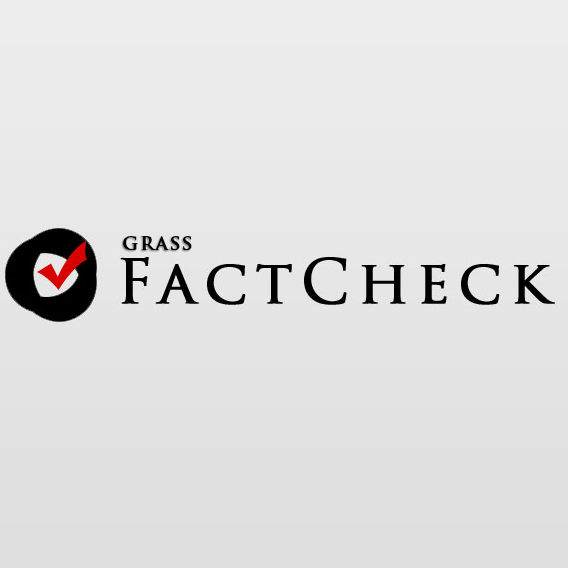Kakha Kukava: “Forty percent of Georgia’s population lives in Tbilisi, generating eighty percent of the country’s GDP.”
Verdict: FactCheck concludes that Kakha Kukava’s statement is MOSTLY TRUE.
A total of 1.3 million people – 35% of Georgia’s total population – live in Tbilisi. The city’s population is 4.7 times larger than that of all other self-governing cities combined (Batumi, Rustavi, Kutaisi and Poti).
Many residents of nearby areas beyond the city’s administrative borders – such as Mtskheta, parts of Gardabani and even Rustavi – commute daily to Tbilisi for work or education. Whilst they do not live in the capital, their social or economic lives are closely tied to it.
Tbilisi is a major urban centre relative to the country’s overall – though not unique globally. Similar cities, where 35% or more of the population resides, are mostly found in Asia and Latin America.
Tbilisi accounts for 53% of Georgia’s GDP – although a very high share, significantly lower than the 80% figure cited. The city also attracts 80% of foreign direct investment. Furthermore, salaries of employees in Tbilisi are 34% higher than the national average and exceed those in some regions by 100% or more.
Considering that the statement contains mostly accurate information with some exaggeration, FactCheck concludes that Kakha Kukava’s statement is MOSTLY TRUE.
Analysis
During a live broadcast on TV Pirveli, Kakha Kukava stated: “Tbilisi has already reached its population capacity peak and this a national problem – not just a Tbilisi issue. There are only two countries in the world where 40% of the population lives in one city: Buenos Aires in Argentina and Tbilisi. Eighty percent of the economy is concentrated here.”
Georgia’s population totalled 3.7 million[1] as of 1 January 2025, with 1.3 million – or 35% – living in Tbilisi, according to GeoStat. Anyone who has lived in the capital for 12 months is counted as a Tbilisi resident, even if they remain officially registered in another region, under census methodology. Conversely, people registered in Tbilisi but living abroad are not included in the city’s population.
A 35% population share is high but not unique. In addition to Tbilisi, 35-40% of the population lives in the capitals of Uruguay, Paraguay, Chile, Panama, Qatar and Kuwait. Just 7% of Argentina’s population lives within city limits in Buenos Aires – the city Kukava mentioned. The Buenos Aires urban agglomeration accounts for 35% which is not a global record – for instance, Seoul’s metropolitan area is home to 26 million people or half of South Korea’s population.
An agglomeration is not a legal term and does not have clearly defined boundaries. It is generally understood as the area surrounding a city that is economically closely linked to it. By this definition, Mtskheta, parts of Gardabani and even Rustavi – Georgia’s third largest city – can be considered part of Tbilisi’s agglomeration. In that case, the agglomeration’s population would exceed 1.5 million – thus accounting for more than 40% of the country’s total population.
Graph 1: Tbilisi’s Share of Georgia’s Population (as of 1 January 2025)
Source: National Statistics Office of Georgia
Tbilisi’s share of Georgia’s population has been steadily rising when accounting for internal migration. According to GeoStat, 27% of the population lived in Tbilisi in 2003, 29% in 2012 and 35% in 2024.
Georgia has a total of five self-governing cities: Tbilisi, Batumi, Rustavi, Kutaisi and Poti. Tbilisi’s population is 4.7 times larger than the combined population of the other four.
Graph 2: Tbilisi’s Population (Thousands) and its Share in Georgia’s Total Population
Source: National Statistics Office of Georgia
The second part of Kakha Kukava’s statement concerned the economy. Tbilisi generates 53% of Georgia’s GDP – whilst a very high share, significantly lower than the 80% figure cited. Whilst the most recent data from GeoStat dates 2023, this does not change the overall picture – Tbilisi’s share of the GDP fluctuated between 50% and 53% from 2010 to 2023.
Graph 3: Tbilisi’s Share in the Economy (2023)
Source: National Statistics Office of Georgia
Tbilisi’s can also be measured by other indicators, although Kakha Kukava did not mention this.
The city dominates in foreign direct investment (FDI). Tbilisi received an average of 77% of FDI between 2013 and 224 or 79% if the pandemic year of 2020 is excluded. The lowest share was 72% in 2013 and the highest 90% in 2022 during this period. Furthermore, Tbilisi accounted for 81% of FDI in 2024.
Tbilisi is home to 33% of employed people and 39% of salaried employees as of 2024. Whilst these figures reflect the population distribution, significant differences exist in wages. The national average monthly taxable salary was GEL 1,970 whilst in Tbilisi it was 19% higher at GEL 2,350. The smallest wage gap when compared regionally is with Mtskheta-Mtianeti where Tbilisi salaries are 34% higher whilst as compared to Racha-Lechkhumi-Kvemo Svaneti they are 140% higher.
Tbilisi is indeed the country’s largest city with over a third of the population living within its administrative boundaries. Its share in the economy is even higher, exceeding 50%, though still far from the 80% figure cited. The city’s share of the population and the GDP do not match. Differences in living standards are reflected in the varying wage levels.
Considering that the statement contains mostly accurate information with some exaggeration, FactCheck concludes that Kakha Kukava’s statement is MOSTLY TRUE.








